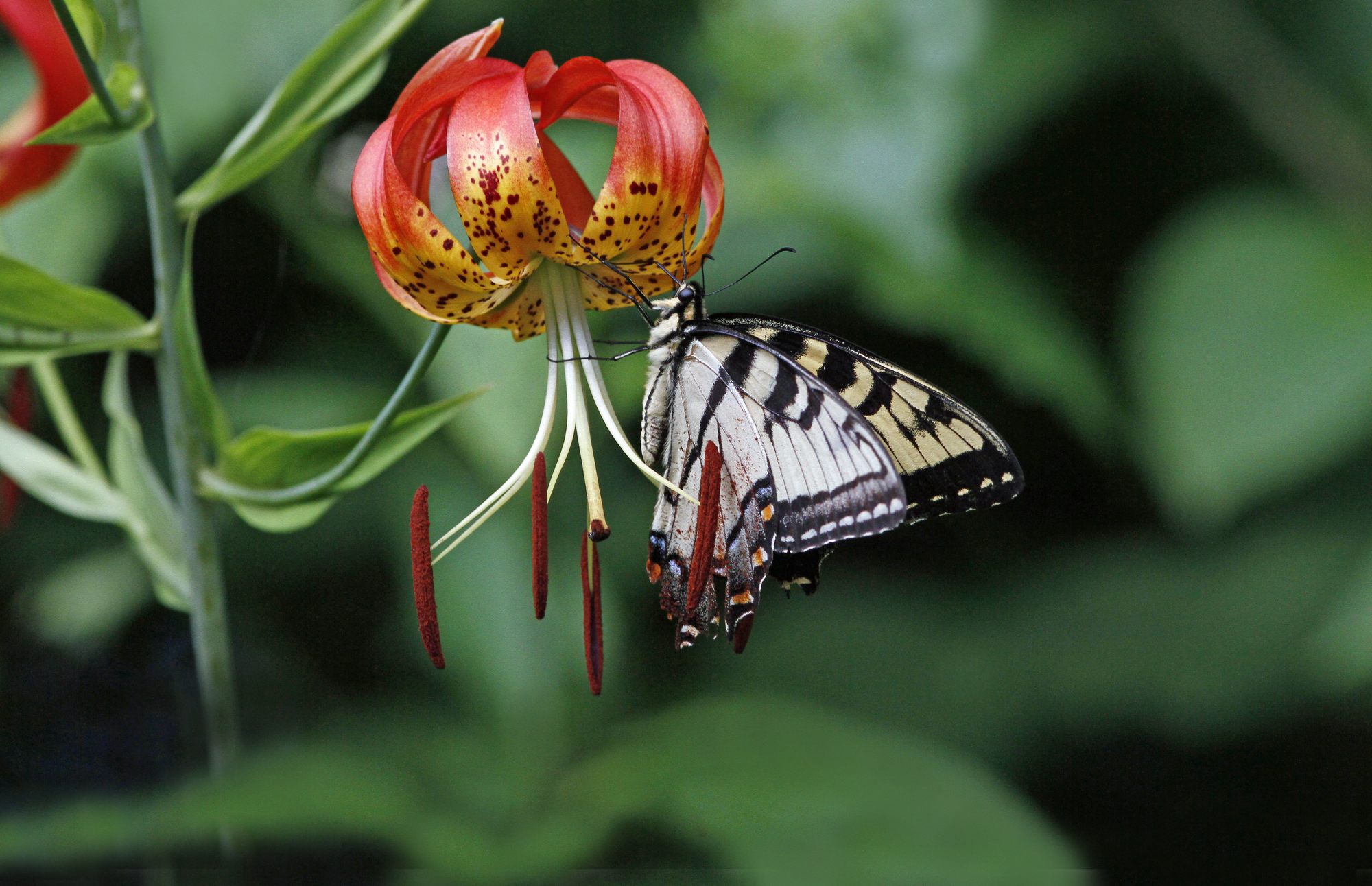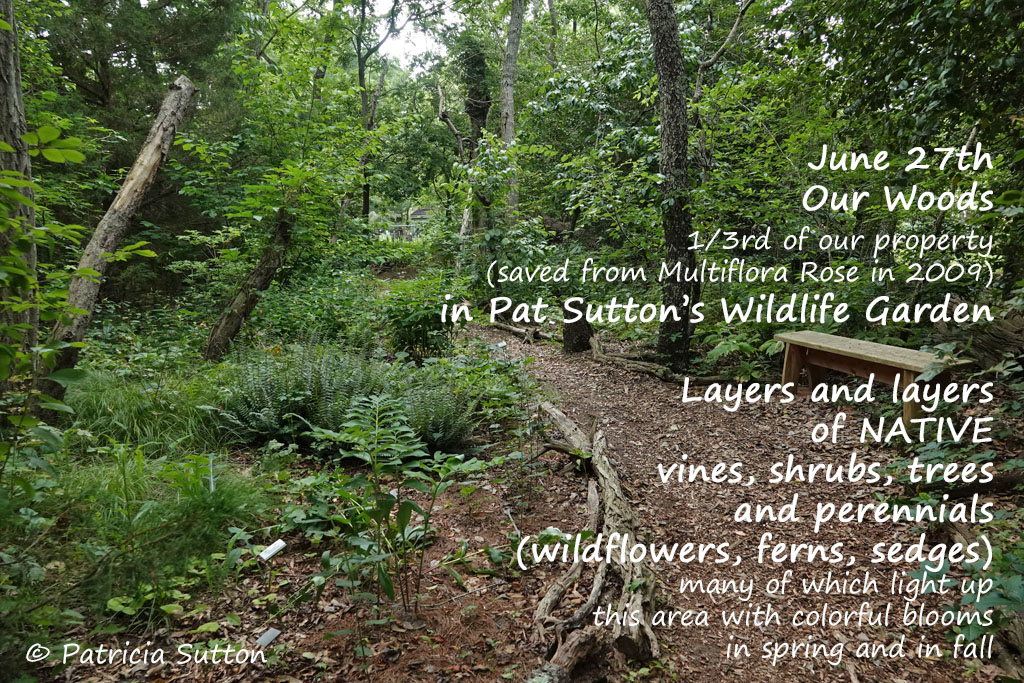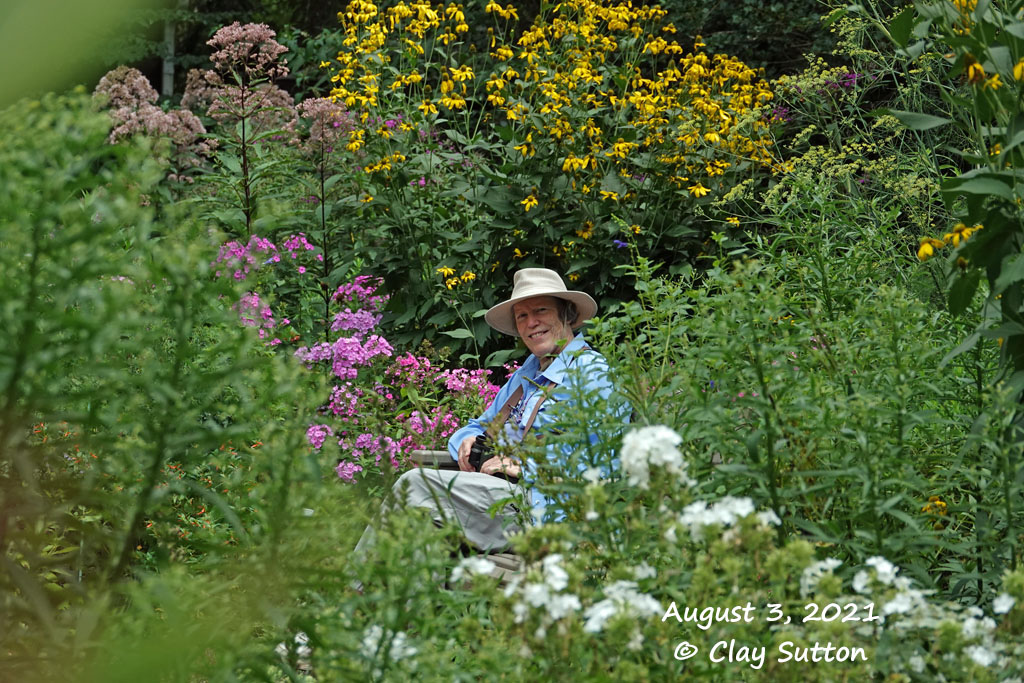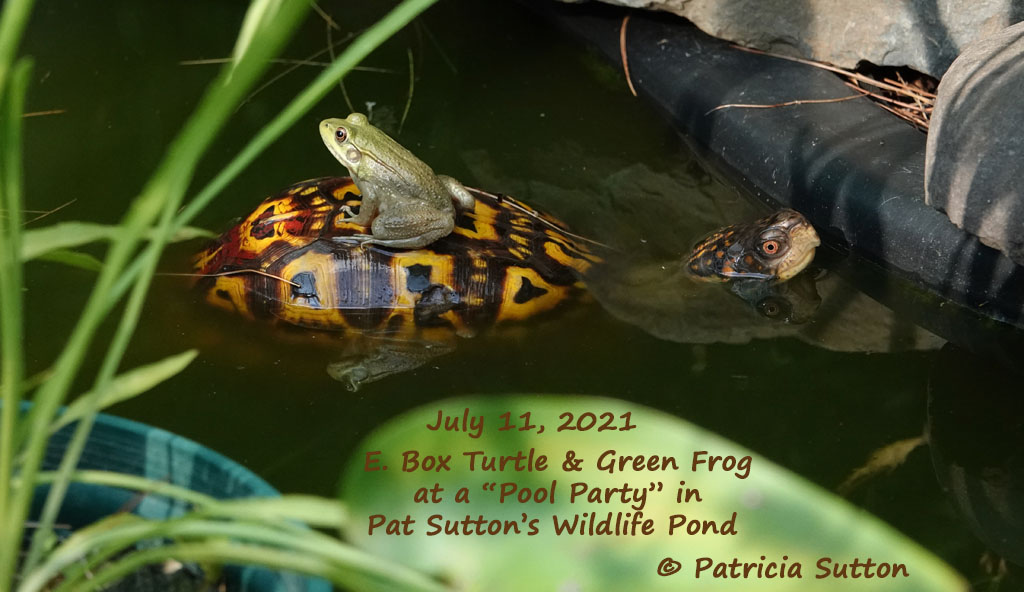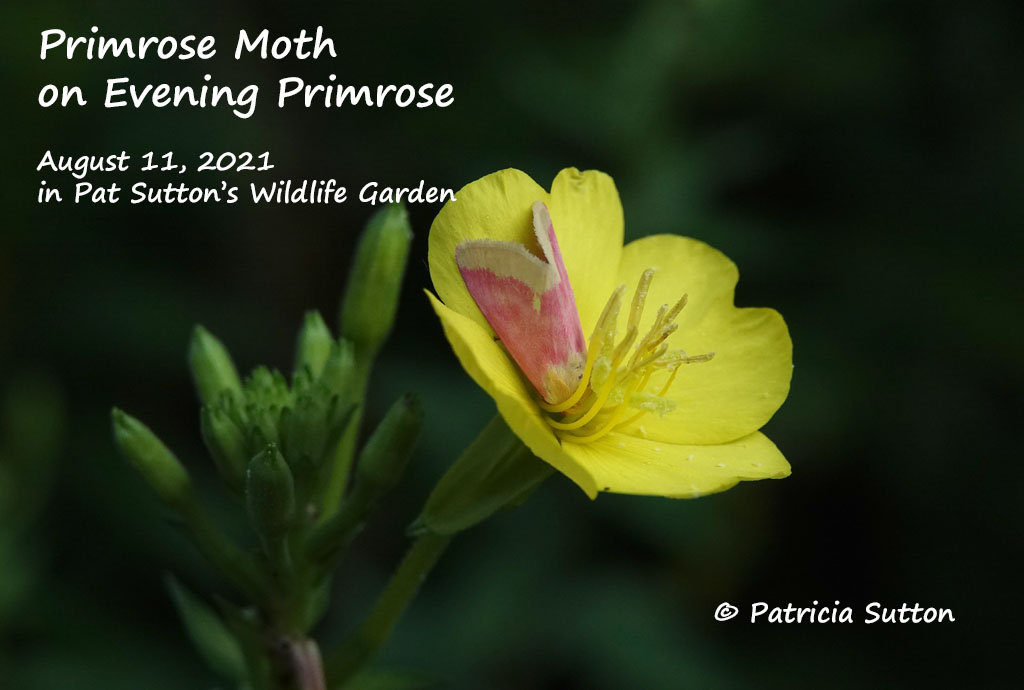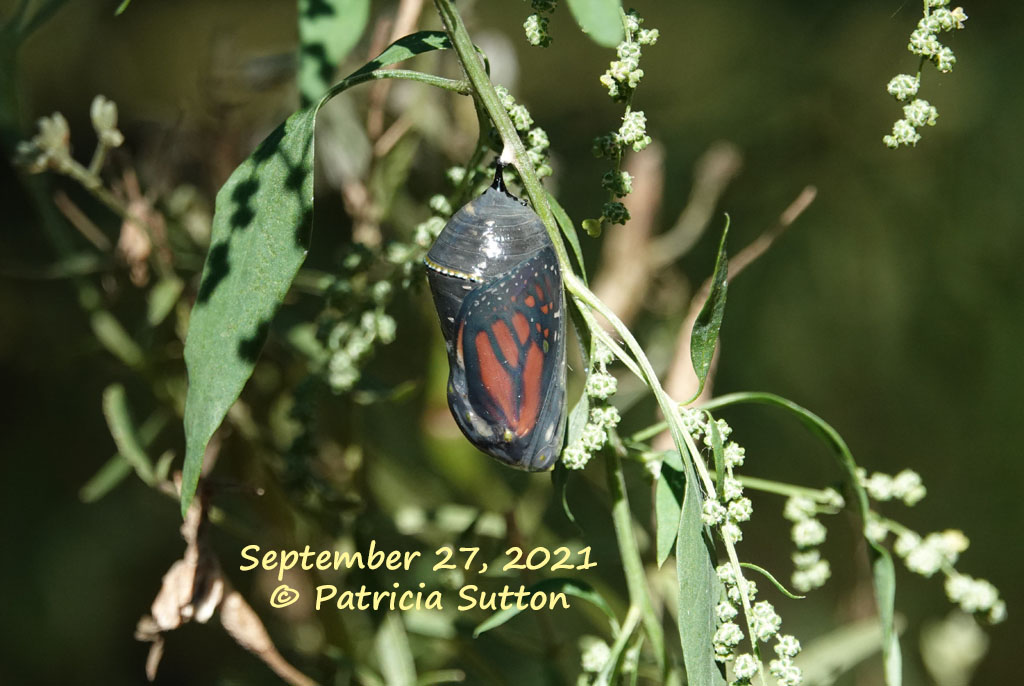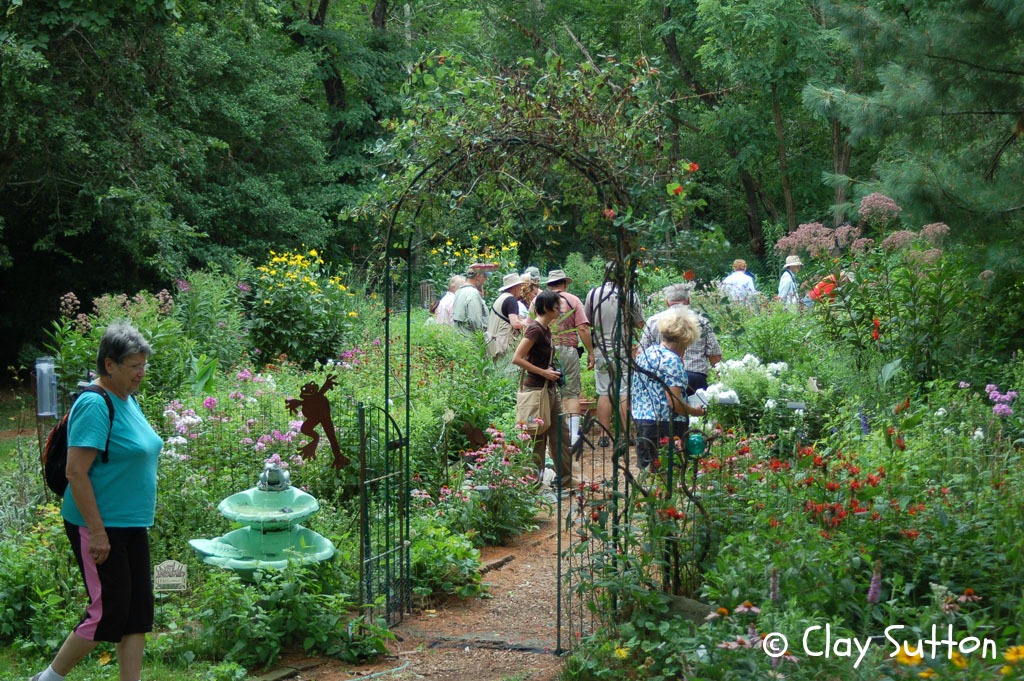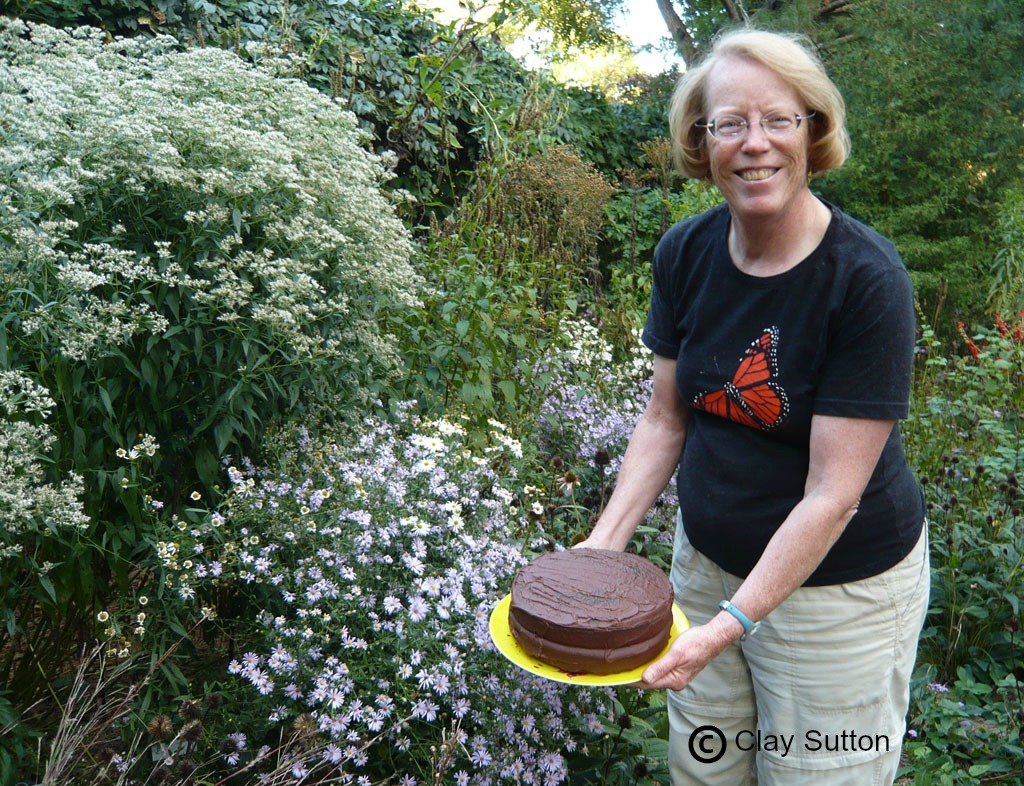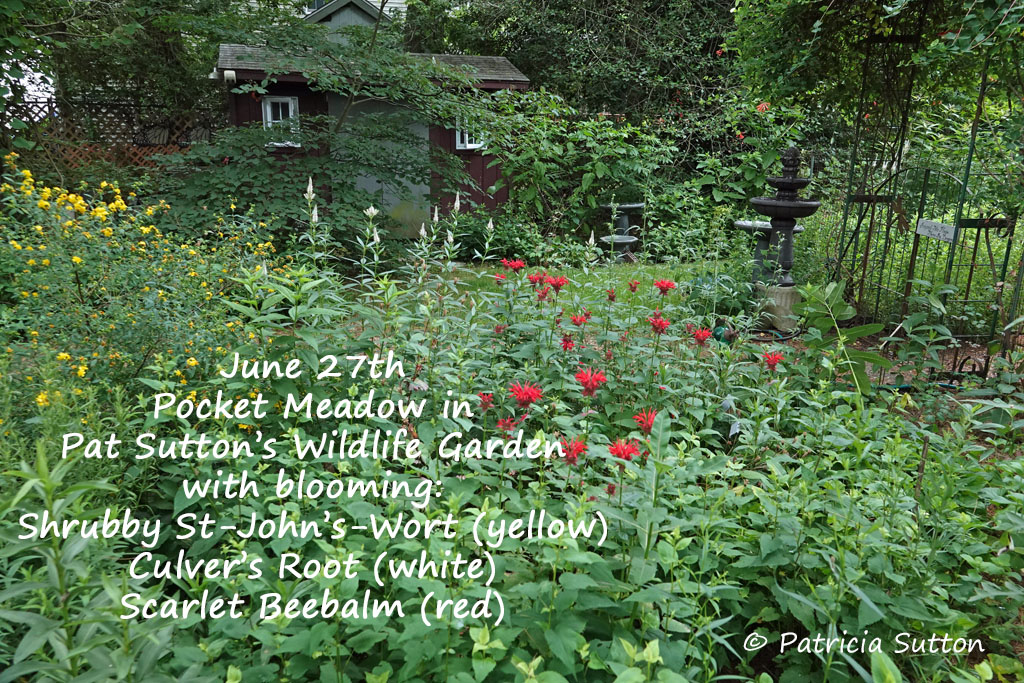 This year I am excited to share that I will be leading tours of my wildlife garden for the first time since COVID. It’s been a long time since the last tour (2019) and I’ve missed sharing my wildlife habitat and all the wonder unfolding in it, plus it has evolved as I’ve learned more, as plants have grown and spread, and as I’ve acquired additional Chocolate Cake nectar and host plants. I will be leading these tours for CU Maurice River, a non-profit organization (registration will be required through CU Maurice River, not through me).
This year I am excited to share that I will be leading tours of my wildlife garden for the first time since COVID. It’s been a long time since the last tour (2019) and I’ve missed sharing my wildlife habitat and all the wonder unfolding in it, plus it has evolved as I’ve learned more, as plants have grown and spread, and as I’ve acquired additional Chocolate Cake nectar and host plants. I will be leading these tours for CU Maurice River, a non-profit organization (registration will be required through CU Maurice River, not through me).
In this post I’ve included photos of the garden in late June when the tours will occur(as well as late June garden visitors). Don’t let the photos of ornate bees, flies, & wasps deter you from signing up for this tour. We’ve never been stung in our garden. All these beautiful pollinators are far too busy gathering nectar and pollen, avoiding predators, seeking mates, and selecting nest sites to show any interest in us! Details follow:
“Tours of Pat Sutton’s Private Wildlife Garden”
47 Years in the Making
Saturday, June 29, 2024
(RAIN DATE: Sunday, June 30, 2024)
Morning Session: 9:30 a.m. to Noon (SOLD OUT a/o 5-31-24)
Afternoon Session: 2:00 to 4:30 p.m. (SOLD OUT a/o 5-31-24)
Limit / Session: 20
COST/tour: $30 (CU Maurice River member), $40 (nonmember)
These tours are SOLD OUT as of 5-31-24. Please email info@cumauriceriver.org OR call (856) 300-5331 to get added to a waitlist
Contact CU Maurice River at the office (856) 300-5331 to register and pay for this garden tour or do so on their website. For the Morning Tour register HERE. For the Afternoon Tour register HERE.
Sign up for the session that best fits your schedule (morning or afternoon tour), and join Pat Sutton for a late-June tour of her 47-year-old wildlife garden in Goshen (Cape May Co.), NJ, when some of her favorite nectar plants are in bloom and drawing in pollinators.

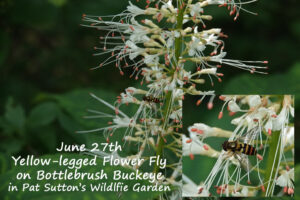 Pat’s gardens showcase the many different ways a habitat can offer food, cover, and water. This one-half acre property shelters 202 species of native plants, including 127 native perennials (plus Partridge Pea, a native annual), 60 native trees, shrubs, & vines; 9 native grasses, and 5 native ferns. Pat’s garden plant signage includes common & latin name, year planted, source of plant, and often specific wildlife that benefits from the plant. Pat’s wildlife habitat includes two wildlife ponds (that numerous frogs, toads, dragonflies, and damselflies breed in), many and different water features, bird and butterfly feeding stations, a pocket meadow of wildflowers and grasses (see 1st photo in this post), extensive shade gardens in under shade trees, wildlife corridors, shrub islands, a woodland of native plants (saved from a jungle of Multiflora Rose and Japanese Honeysuckle in 2009), and a full-sun pollinator garden.
Pat’s gardens showcase the many different ways a habitat can offer food, cover, and water. This one-half acre property shelters 202 species of native plants, including 127 native perennials (plus Partridge Pea, a native annual), 60 native trees, shrubs, & vines; 9 native grasses, and 5 native ferns. Pat’s garden plant signage includes common & latin name, year planted, source of plant, and often specific wildlife that benefits from the plant. Pat’s wildlife habitat includes two wildlife ponds (that numerous frogs, toads, dragonflies, and damselflies breed in), many and different water features, bird and butterfly feeding stations, a pocket meadow of wildflowers and grasses (see 1st photo in this post), extensive shade gardens in under shade trees, wildlife corridors, shrub islands, a woodland of native plants (saved from a jungle of Multiflora Rose and Japanese Honeysuckle in 2009), and a full-sun pollinator garden.
Over the 46 years Pat & Clay have lived at this site (since 1977), they’ve tallied 213 bird species including such unlikely species as Varied Thrush, Pileated Woodpecker, Golden-crowned Sparrow, and Black-headed Grosbeak (wintered). They’ve also tallied 79 butterfly species (the 2nd highest butterfly yard list in NJ)! But a real scare in the last 6 or so years has been a drastic drop in diversity and numbers of butterflies (and moths), despite Pat continually adding to their property’s offering of native nectar & host plants.
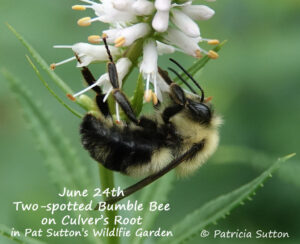
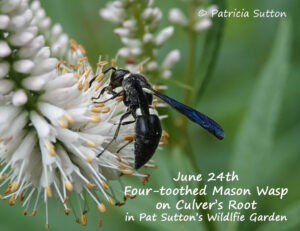
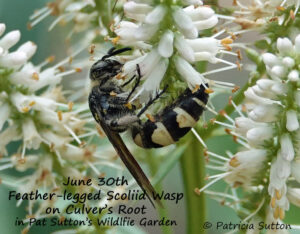
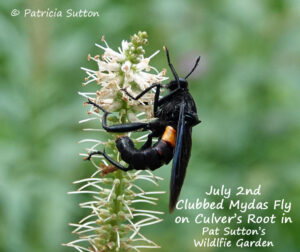
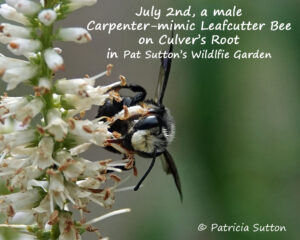 Fortunately, other pollinators (bees, wasps, flies, day-flying moths, and beetles) caught Pat’s fancy. They seemed to be abundant, but in reality, they too are probably far fewer during today’s “Insect Crisis,” than they once were. Pat readily admits that “in the good old days, we were so dazzled by the clouds of butterflies dashing about the garden that we barely noticed the other pollinators.”
Fortunately, other pollinators (bees, wasps, flies, day-flying moths, and beetles) caught Pat’s fancy. They seemed to be abundant, but in reality, they too are probably far fewer during today’s “Insect Crisis,” than they once were. Pat readily admits that “in the good old days, we were so dazzled by the clouds of butterflies dashing about the garden that we barely noticed the other pollinators.”
With less travel during the Pandemic, Pat explored her wildlife gardens almost daily, savoring the myriad of native plants and the many pollinators attracted to them. In previous years she’d dabbled at learning bee, wasp, and fly pollinators, but they are tough! With the help of iNaturalist and Heather Holm’s book Wasps, she earnestly studied and documented the pollinators benefiting from her wildlife habitat.
Late in 2023, Pat was given hope (and great joy) when she tallied up the pollinators (beyond butterflies) benefiting from their diverse ½ acre property. She’d photographed 111 pollinators, including: 37 wasps, 31 flies, 26 bees, 9 beetles, and 8 diurnal moths nectaring in the gardens. That project is ongoing. You can check out Pat’s iNaturalist sightings HERE (once there click on “Sightings”).
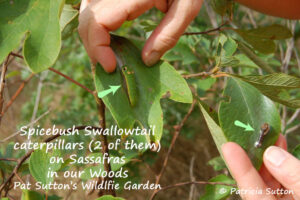
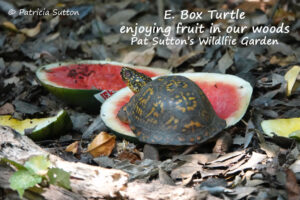
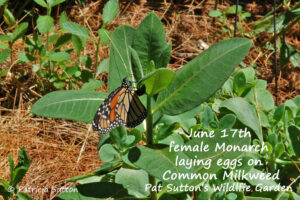
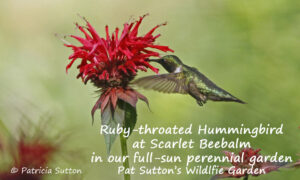
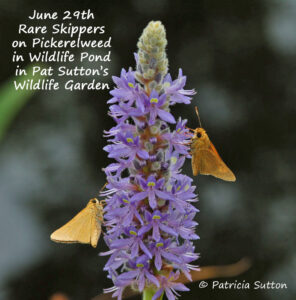
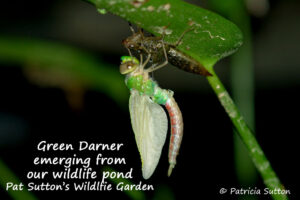
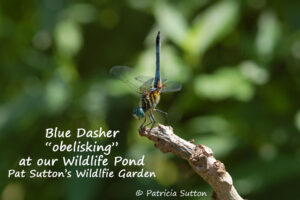 During this tour you are sure to see butterflies and many of the other pollinators that have caught Pat’s fancy, Ruby-throated Hummingbirds and other songbirds, and learn of many native nectar and host plants, as well as enjoy many fun garden features and design ideas.
During this tour you are sure to see butterflies and many of the other pollinators that have caught Pat’s fancy, Ruby-throated Hummingbirds and other songbirds, and learn of many native nectar and host plants, as well as enjoy many fun garden features and design ideas.
This totally educational experience will benefit and dazzle long-time gardeners and new-to-wildlife-gardening participants alike.
Native plants will be available for sale at two nearby sites the day of these tours.
Upon registration, participants will receive instructions for the tour.
